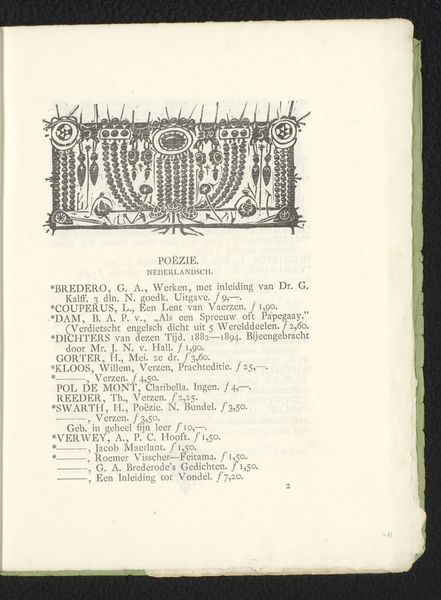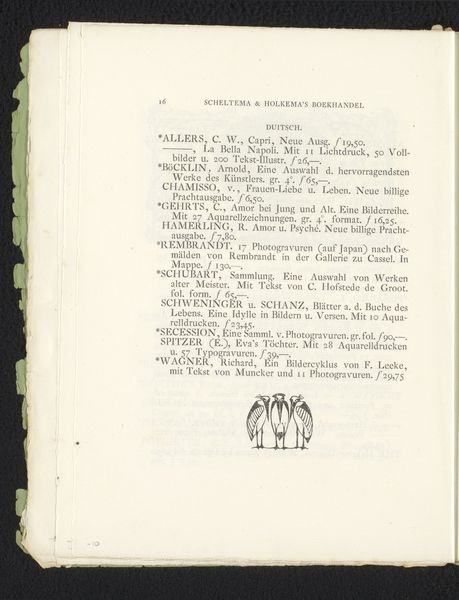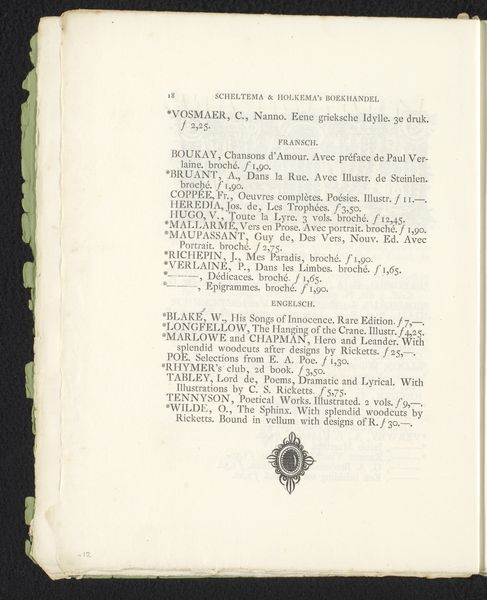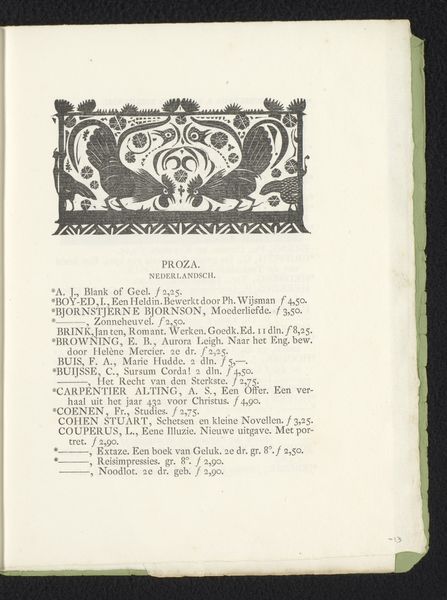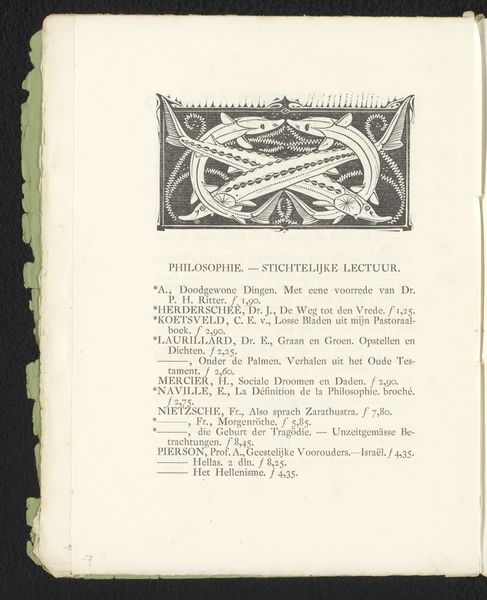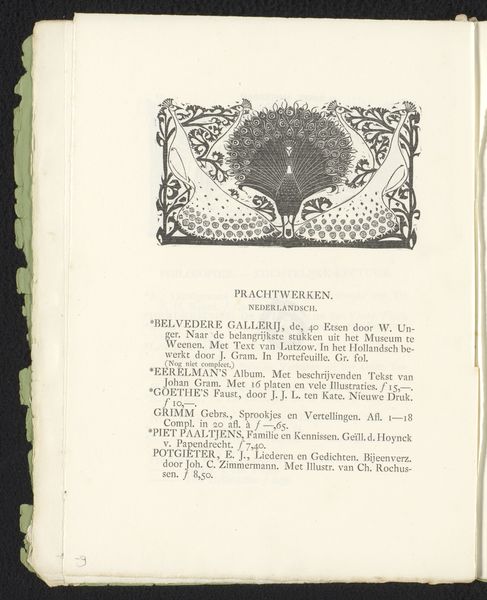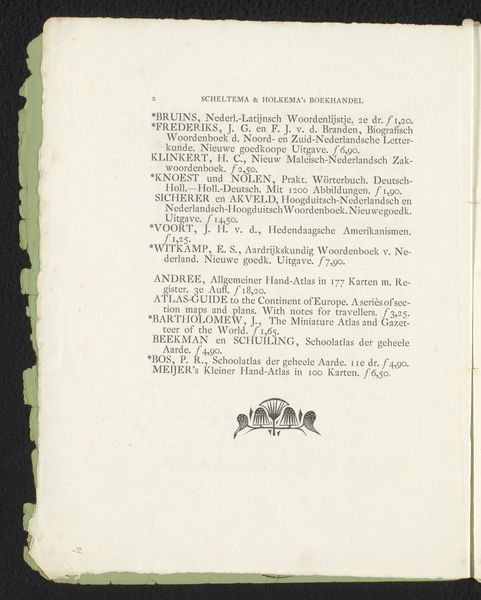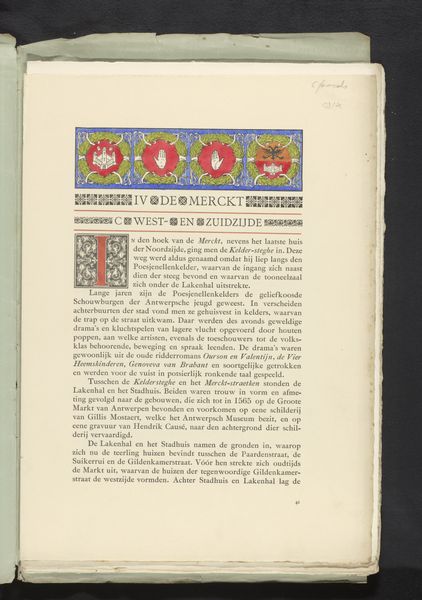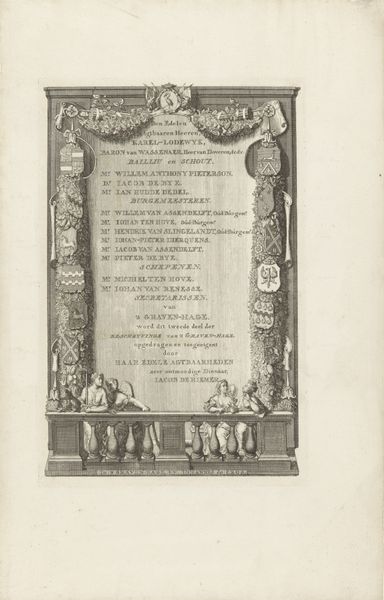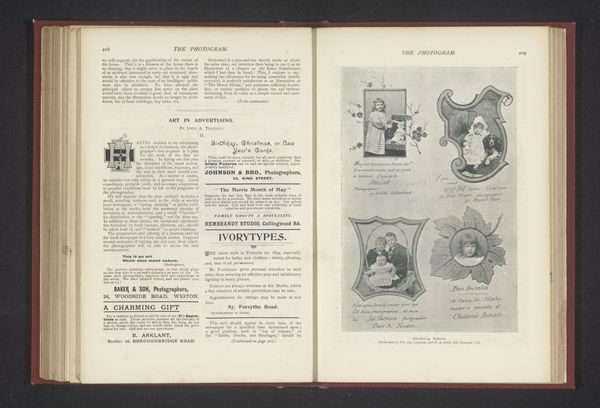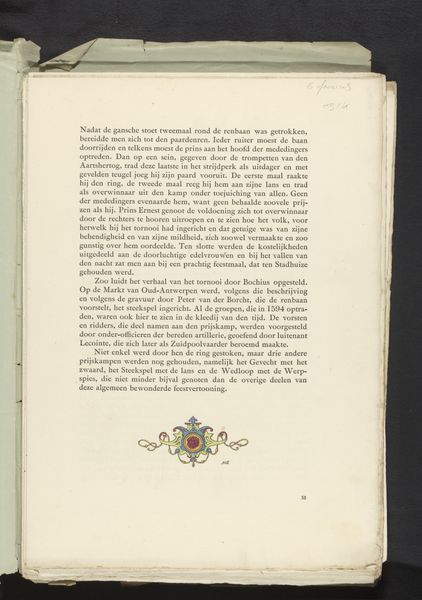
drawing, paper, ink
#
drawing
#
art-nouveau
#
pen drawing
#
pen sketch
#
old engraving style
#
hand drawn type
#
paper
#
personal sketchbook
#
ink
#
pen-ink sketch
#
ink colored
#
pen work
#
sketchbook drawing
#
decorative-art
#
sketchbook art
Dimensions: height 198 mm, width 247 mm
Copyright: Rijks Museum: Open Domain
Editor: Here we have Gerrit Willem Dijsselhof's "Titelhoofd met kikkers en kikkerdril" from 1893-1894, a pen and ink drawing on paper held at the Rijksmuseum. I am immediately struck by how the Art Nouveau style merges these delicate naturalistic details into something quite graphic. How does this piece strike you? Curator: For me, the critical thing is Dijsselhof’s engagement with materials and the labor involved in production. Consider the process: meticulous ink work, repeated forms… a clear interest in not just depicting nature, but transforming it into a repeatable, marketable design. Where might this "title head" have been used? Editor: Given the text below the drawing on this page, possibly as ornamentation for printed materials, like books? It seems quite literally at the *head* of the title or section. Curator: Precisely! Think about the cultural context: the late 19th century, the rise of consumer culture, and the debate around 'high' art versus decorative arts and crafts. Dijsselhof’s choice of this detailed style, even his subject matter—frogs and spawn— connects directly with naturalism being commercially appropriated as aestheticized decoration. What is being consumed here, exactly? Editor: The detailed rendering aestheticizes these lower class pond denizens, creating value by making these "creepy" species… pretty. Curator: Indeed. By examining the pen strokes, the labor involved, and the original purpose - probably book design to entice middle-class consumers, we shift our focus away from the art object as rarefied, individualized creation toward mass produced material culture. Does knowing it’s pen and ink on paper versus some other method influence your read of it at all? Editor: Definitely! Seeing the manual, crafted aspect against its intended use – mass-produced books – creates a real tension, highlighting the commercialization of art and craft. Curator: Exactly. Next time you approach an artwork, ask yourself what social needs went into its creation and whose labor made the product visible. Editor: That is an angle I never would have considered alone; thanks so much.
Comments
No comments
Be the first to comment and join the conversation on the ultimate creative platform.
